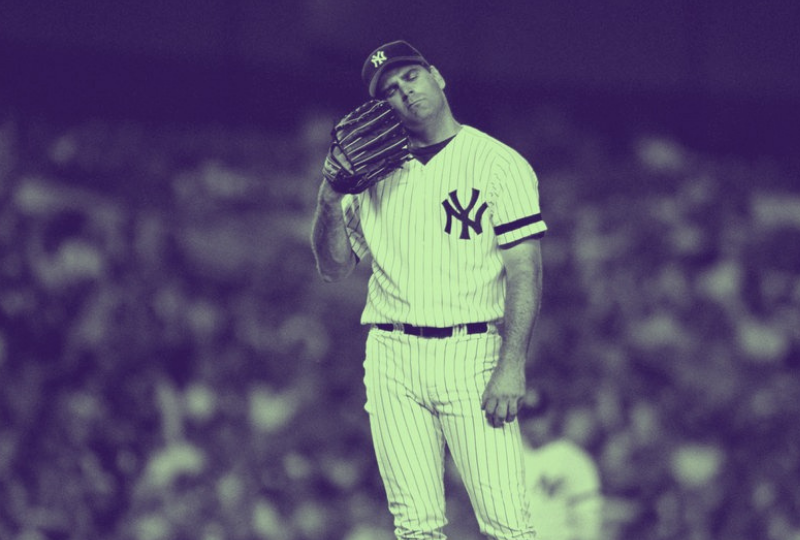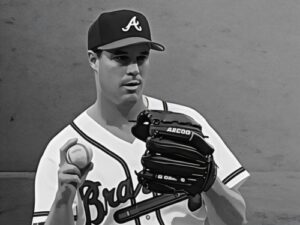In many ways the New York Yankees and team owner George Steinbrenner helped create the free agent market in baseball. When the Oakland A’s failed to pay an insurance premium on Catfish Hunter following the 1974 season, the right-handed pitcher became baseball’s first free agent. Nearly every team in baseball bid on Hunter’s services, but the Yankees won the auction, agreeing to pay Hunter $3.5 million over five years. That converts to a cool $15 million in 2009 dollars.
The First Free Agent Class
Two years later, following the 1976 season, the free agent era was launched in full when 24 players hit the market. Pitchers Andy Messersmith and Dave McNally had challenged the reserve clause in court and won. Baseball players were free to sell their services when their contracts expired. No longer were they bound to the team they signed their first contract with.
The Yankees were once again active bidders in that first free agent class of 1976. Steinbrenner may have been demanding and nearly impossible to work for, but he was a visionary. He recognized that the free agent market was a viable option for loading his roster with talent that could win immediately. The days of drafting high school and college players and hoping they’d pan out were fading. To be truly competitive every single season, a team would need to use free agency, the draft, and trades to build a roster.
Nearly 35 years later, the Yankees have signed dozens of free agents. They’ve signed some of the greatest players in the game, including future Hall of Famers. They’ve snatched away star players from smaller market clubs and they’ve resigned their own homegrown talent (when they haven’t traded it away to get established players).
The Yankees have also signed some duds, and that’s what this article is about. Here are the stinkiest free agent signings in Yankee history, ranked by their foul odor.
7. Steve Kemp
Free Agent Class of 1982 ($5.45 million over five years, $12 million in 2009 dollars)
A year after signing speedy Cincinnati outfielder Dave Collins to a three-year deal that also proved to be a bust, Steinbrenner dipped into his wallet to sign Kemp, a scrappy, lunch pail slugger who bolstered his resume in Detroit. Kemp had several .300 seasons under his belt, but his savage left-handed swing never translated into much with the Bombers. He hit 19 homers with a .400 slugging percentage in parts of two seasons before being banished to Pittsburgh. That works out to about a quarter of a million bucks per homer.
6. Hideki Irabu
Free Agent Class of 1997 ($12.8 million over four years, $16 million in 2009 dollars)
In 1997, the San Diego Padres purchased Irabu’s contract from the Chiba Lotte Marines. This signing is especially notable because it led to the creation of the posting system currently used by Japanese and MLB teams. Irabu, however, refused to sign with the Padres, saying he would only play with the Yankees. For the negotiating rights to Irabu, the Yankees offered the Padres a choice of one from a list of players including Brian Boehringer, David Weathers, Chris Cumberland, Andy Fox, and Matt Luke. The Padres would eventually include him as a player-to-be-named-later in a trade that involved Homer Bush, which saw Irabu traveling to the Yanks in exchange for Rafael Medina, Ruben Rivera, and $3 million in cash. The Bombers signed him to a $12.8 million, four-year contract, and after only eight minor league games, the Yankees put him in their rotation. It was an unmitigated disaster. His ERA as a rookie was 7.08. Manager Joe Torre refused to use him in tough situations. After one particularly poor outing, Steinbrenner called him a “fat pussy toad.” Yes, really. He was traded to Montreal – baseball’s Siberia – after three years in pinstripes.
5. Jaret Wright
Free Agent Class of 2004 ($21 million over three years, $23.6 million in 2009 dollars)
Only twice in his career had Wright won as many as 12 games in a season when the Yankees handed him a $21 million deal. As a 21-year old rookie with Cleveland in 1997, Wright pitched a couple of gutsy games in the post-season. He seemed to live off that reputation for years. To be fair, the righty had great stuff, but his 15 win season with Atlanta in 2004 was just the second season where he’d started as many as 30 games. He was never asked to be the ace in New York, but the relaxed pressure didn’t make it any easier for him. He had a monstrous 6.08 ERA his first season on the mound in New York, and found himself in the bullpen for part of the second year. Yankee Stadium fans loved to boo him, and Cashman dealt him to the Orioles in the 2006 off-season for next to nothing.
4. Kenny Rogers
Free Agent Class of 1995 ($20 million over four years, $28 million in 2009 dollars)
When he arrived in New York for the ’96 campaign, Rogers was a welcome addition to a veteran staff, and the third lefty in the group. But rather than anchor the staff, Rogers logged a 4.68 ERA, and though the Yanks won their first World Series title in 18 seasons, the southpaw’s attitude wore his welcome. In his memoir, Joe Torre admitted that Rogers was one of the most difficult players he ever managed. Rogers consistently complained, fought with media and teammates, and pitched poorly. In 1997 his ERA ballooned over 5.00, prompting Torre to send Rogers to the bullpen. That off-season, the Yanks dealt Rogers to the A’s (even paying them to take his contract). The Rogers fiasco was over in the Bronx. To add insult to injury, pitching for Detroit a decade later, Rogers shut down the Yankees in Game Three of the 2006 ALDS. The next day they were bounced from the post-season by the Tigers.
3. Ed Whitson
Free Agent Class of 1984 ($4.4 million over four years, $9 million in 2009 dollars)
As a starting pitcher, Whitson had posted just one winning season prior to being handed a multi-million dollar deal by the Yankees. Fortunately, it came in 1984 as one of the workhorses in the San Diego rotation that led the Padres to the World Series. When Whitson hurled a gem against the Cubs in the NL Playoffs, Steinbrenner sat up and took notice. That’s about all it took for Whitson to become a Yankee. George overlooked the fact that Whitson was rocked in the World Series by the Tigers. It was a sign of how the right-hander handled big time pressure. Temperamental Whitson was never comfortable in The Big Apple. Not only did he pitch poorly in pinstripes, it got so bad that he refused to pitch in Yankee Stadium in front of fans who booed him mercilessly. He managed to go 10-8 despite a 4.88 ERA in 1985 due to fantastic run support, but when he pitched like crap early in 1986, Whitson was relegated to the bullpen. He was traded back to the Padres in July. Whitson was so bitter about his brief foray as a Yankee that he refused to sign autographs of photos or baseball cards that depicted him as a Yankee. He also refused to pitch in Shea Stadium, lest he be booed by Yankee fans there. The Yanks inked another Padre starting pitcher five years later – Andy Hawkins – a former teammate of Whitson’s. Hawkins tanked as well.
2. Danny Tartabull
Free Agent Class of 1991 ($25.5 million over five years, $40 million in 2009 dollars)
To Yankee fans, Tartabull is the poster child for the team’s free agent debacles of the early 1990s. The son of a former big leaguer, Tartabull was blessed with baseball talent, which he showed off with the Mariners and Royals. In his final season with Kansas City, the outfielder led the league in slugging. His reward was a five-year mega-million dollar deal from the Yanks. Though he did hit as many as 31 homers as a Yankee, he never came close to being the middle of the lineup clutch performer the brass had envisioned. He was shipped out of town after the All-Star break in 1995.
1. Carl Pavano
Free Agent Class of 2004 ($44 million over four years, $49 million in 2009 dollars)
Mention Pavano’s name and Yankee fans cringe. With a top-notch fastball and slider, Pavano established himself as one of baseball’s best young pitchers as an ace with the Florida Marlins. His impeccable control at such a young age had free agent suitors drooling. The Yankees had felt Pavano’s sting themselves, scoring just a single run off of him in nine innings in their loss to the Marlins in the 2003 Fall Classic. GM Brian Cashman wooed Pavano away from several other teams, including the rival Red Sox. But over the course of his four years in New York, Pavano started just 26 games due to injuries. Even when he was healthy, he stunk. He missed the entire 2006 season with shoulder troubles and never started a single post-season game. He bolted the Bronx via free agency in 2009 and proceeded to win 31 games the next two seasons, frustrating Yankee fans further.






